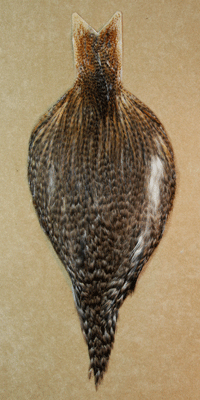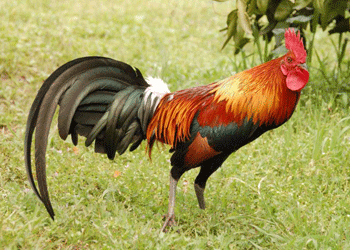
Barnyard Roosters
Some of the most spectacular roosters I've seen have been on friends farms, strutting around like they own the place. So it stand to reason that such beautiful feathers would have a place in fly tying.
What makes many of these birds interesting is that they are a mix of many breeds. Every size, shape and color, no two are the same.
If it's pure lines that interest you, poultry shows are a great place to see the different breeds. Everyones busy getting their best bird ready for the judge, comb and wattles oiledall up, and not a feather out of place, all in hopes to capture best of show!
on the farm
Color, Form & Pattern
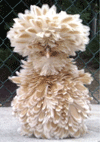 It is widely believed that all domestic breeds of chickens are descended from red junglefowl. However, take a look at this buff laced polish frizzle and you might find that hard to believe. Just how could these genes be hidden away in a bird that for the most part looks like the bird above? You might ask, what else is possible?
It is widely believed that all domestic breeds of chickens are descended from red junglefowl. However, take a look at this buff laced polish frizzle and you might find that hard to believe. Just how could these genes be hidden away in a bird that for the most part looks like the bird above? You might ask, what else is possible?
Early poultrymen in the New World blended the European and Asiatic races of fowls to create the Plymouth Rock, the ideal of a general purpose fowl; the Wyandotte, an earlier maturing bird of the same type; the American Leghorn, the most popular laying type; and the Rhode Island Red, the most popular dual purpose fowl, prized for its brown egg productions and a favorite for the table.
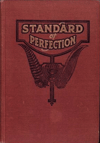 The American Standard of Perfection, first published in February of 1874, demanded harmonious developement of all characters and qualities of all recognized breeds. It listed 41 breeds, each distinguished by size, plumage color, comb type, skin color, number of toes, amount of feathering, earlobe color, egg color, as well as place of orgin. Todays edition lists nearly 60 and is the official breed standard for the poultry fancy and is used to judge at sanctioned poultry shows.
The American Standard of Perfection, first published in February of 1874, demanded harmonious developement of all characters and qualities of all recognized breeds. It listed 41 breeds, each distinguished by size, plumage color, comb type, skin color, number of toes, amount of feathering, earlobe color, egg color, as well as place of orgin. Todays edition lists nearly 60 and is the official breed standard for the poultry fancy and is used to judge at sanctioned poultry shows.
Todays finest genetic hackle can be traced back to these poultry shows. Henry Hoffman found a trio of barred Rock bantams at a show in Oregon and went on to develope the finest grizzly hackle on the market. At the same time, Harry Darbee, and later Andy Miner, were working to perfect dunn hackle. However, they took a much different path by starting with a flock of blue Andalusians, a large fowl mediterranean breed. The orgins of badger can be traced back to Colombia Rocks.
| Rooster Capes - Bright Colors | |||||||||||||||||||||||||||||||||||||||
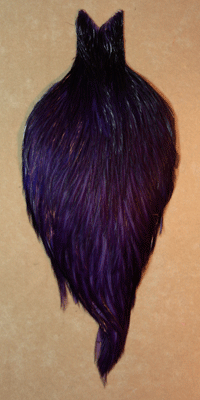 |
|||||||||||||||||||||||||||||||||||||||
$25These bright colors have been dyed on white, grizzly, and badger capes. Scroll over the thumbnails to swap the image on the left or click to open a window for a larger image.
|
|||||||||||||||||||||||||||||||||||||||
Large Fowl and Bantam Lines
 Many breeds of chickens have a bantam counterpart. Bantams are miniture chickens, usually one-forth to one-fifth the size of the standard or large fowl. A true bantam has no large fowl counterpart and is naturally small.
Many breeds of chickens have a bantam counterpart. Bantams are miniture chickens, usually one-forth to one-fifth the size of the standard or large fowl. A true bantam has no large fowl counterpart and is naturally small.
The name bantam comes for the city Bantam, once a major port in Indonesia. European sailors prefered live fowl for long sea journeys and would stop there to restock. They were fond of the small native breeds that had become plentiful in that part of the world. As such, any small poultry came to known as a bantam.
| Full Skins | |||||
 |
|||||
If there's a favorite you're looking for, give me a call.
|
|||||
Back in the late 50's, Henry Hoffman attended one of these shows and selected a pair of Barred Rock Bantams that would become the genetic foundation for the dry fly hackle of today.
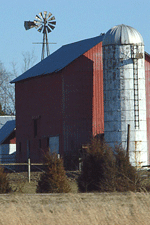
On the farm
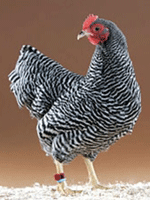
barred rock bantam hen
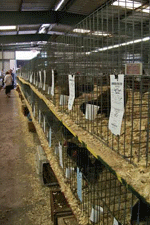
show day
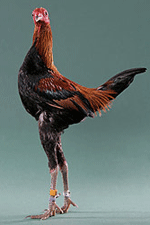
Modern Game Bantam

Painting
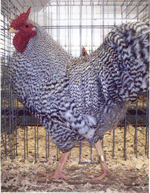
Dominiker Rooster
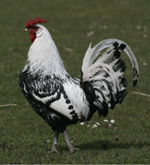
Siver Spangled Hamburg
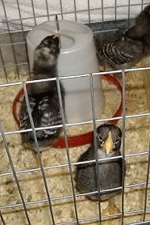
Barred Rock Chicks
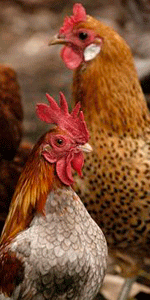
Golden Spangled Hen
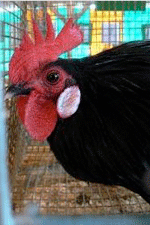
Black Minorka Bantam
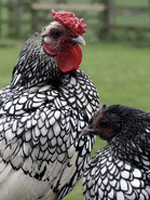
Silver Sebright Pair
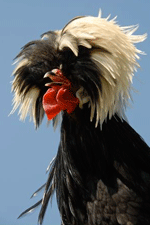
White Crested Black Polish
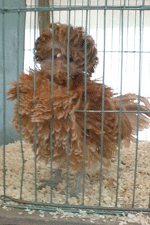
Best of Show!
Buff Laced Polish Frizzle Hen
